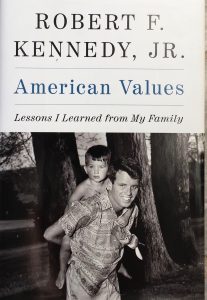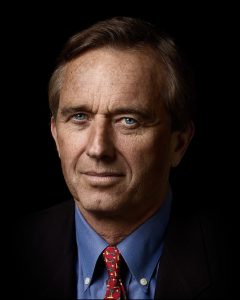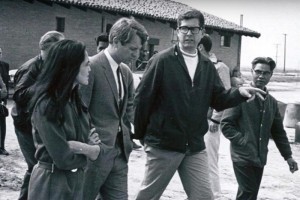10 May, 2007 Dr. David R. Wrone is a retired professor of history, University of Wisconsin - Stevens Point
David Talbot, Brothers: The Hidden History of the Kennedy Years, New York: Free Press, 2007. Pp. xvi, 478. $28.00.
Based on wide-ranging interviews with associates of President John F. Kennedy and his brother Robert, the founder of Salon.com, David Talbot, gives us a hitherto hidden picture of those years, 1960-1968. It is a great work and well written.
Even as he took office JFK confronted military and CIA forces who moved to control policies and thrust America into nuclear war. This continued throughout his 1000 days as he with his brother fought to block the right wing, CIA, and military’s drive for a nuclear war and control of national policies. Talbot reveals that in the Bay of Pigs invasion the military had a covert plan to use it to pull JFK into a major war, which he blocked by his courage to stand up to the generals and CIA. In Laos and later Berlin nuclear war was the military design for “victory,” that he resisted. He soon learned the military had designs for a sneak attack on Russia and China with nuclear weapons that he scuttled.
In the Cuban Missile Crisis (1962) he initially stood with only his brother Robert against the clamor of the Joint Chiefs who wanted an invasion. Unbeknownst to the U. S, the Soviet troops had scores of nuclear missiles on the island that if we invaded would have been fired at America and have launched the world into a nuclear holocaust. The generals and admirals counted JFK’s peaceful solution as the worst defeat in the nation’s history and hated him with unbridled passion. The CIA and FBI constantly surveilled him.
In the FBI Attorney General Robert Kennedy confronted a racist, reactionary institution. He had to assemble his own team of agents from other departments’ scraps to carry out JFK’s and his policies. His life was constantly threatened by criminal elements requiring him at times to bring in personal friends from the marshal service whom he could trust to guard him and his family. One great unsung accomplishment was to cripple organized crime’s movement to take over government functions for they had become a growing force threatening the nation itself.
By November, 1963, as JFK moved to disengage from Vietnam, abate Cuban tensions, restructure the CIA, and establish detente bullets cut him down.
Not for a minute did Robert Kennedy believe Lee Harvey Oswald killed his brother, but within hours came to believe reactionary American forces slew him. If Oswald was involved at all it was as a minor player. Immediately after the funeral he dispatched a family friend to the Kremlin to inform the Soviets not to believe the story of what happened circulating in federal circles. He informed his closest friends that it would require the power of the presidency to find the culprits. His search for the murderers never ceased. In efforts to find information it went to surprising lengths, including a secret meeting with teamster Jimmy Hoffa.
In a frightening point Talbot convincingly shows how the intelligence agencies have since the death of the Kennedy brothers insidiously fed untrue information about them to Congress and to happy conduit reporters like Sy Hersh.
What is so striking in this remarkable volume is what is not there. At the national level Robert Kennedy almost stood alone in his fight to find his brother’s killers while the prominent academicians, the intellectuals, JFK’s aides, and the Democrat Party of the nation (and Wisconsin) either stood to the side or clasped the whitewash of the Warren Report. It was left to the remnants of the old progressives and the youth of the sixties, to the housewives and bartenders, to continue the struggle and show two or more riflemen slew JFK and none of them Oswald but alas still not to know the exact forces behind it.
Brothers appears in the midst of a number of major books by long retired CIA men and blind supporters of the Warren Commission either seeking to affirm its findings or to besmirch the Kennedys, the men and their policies. Some of these are: A CIA veteran Tennant H. Bagley, in Spy Wars: Moles, Mysteries, and Deadly Games (Yale, 2007) claims the 1964 Soviet defector Yuri Nosenko was a master spy and Oswald a red. Yet, the clear evidence proves Nosenko who had seen Oswald’s file in the Kremlin was genuine and his terrible torture by the CIA the work of paranoids.
What Bagley wants to hide, as the CIA did from the American people, is Nosenko related the Soviets found Oswald to be a right winger who with a shot gun could not hit a near rabbit and they also thought him a U. S. sleeper agent. Larry Devlin, Chief of Station, Congo: Fighting the Cold War in a Hot Zone (Perseus, 2007) claims his CIA station did not assassinate the liberal Congo leader Patrice Lumumba, a deed that forced JFK to work with the right wing. However, Belgian and American investigative reporters’ recent accounts soundly refute Devlin.
Vincent Bugliosi’s heavily promoted Reclaiming History: The Assassination of President John F. Kennedy (Norton, 2007) in 1750 pages seeks to crush critics of the Warren Commission to prove Oswald indeed was the lone assassin. It trumps Gerald Posner’s Case Closed as the most error ridden work on the murder. Soon responsible critics—not theorists or buffs, but solid scholars, attorneys, medical doctors, scientists, forensic authorities, and subject matter experts —using the internet, the only mechanism open to them to respond, will be mounting their massive criticisms of its host of common errors, its sustained omissions of central facts, and its blatant corruptions of evidence.















